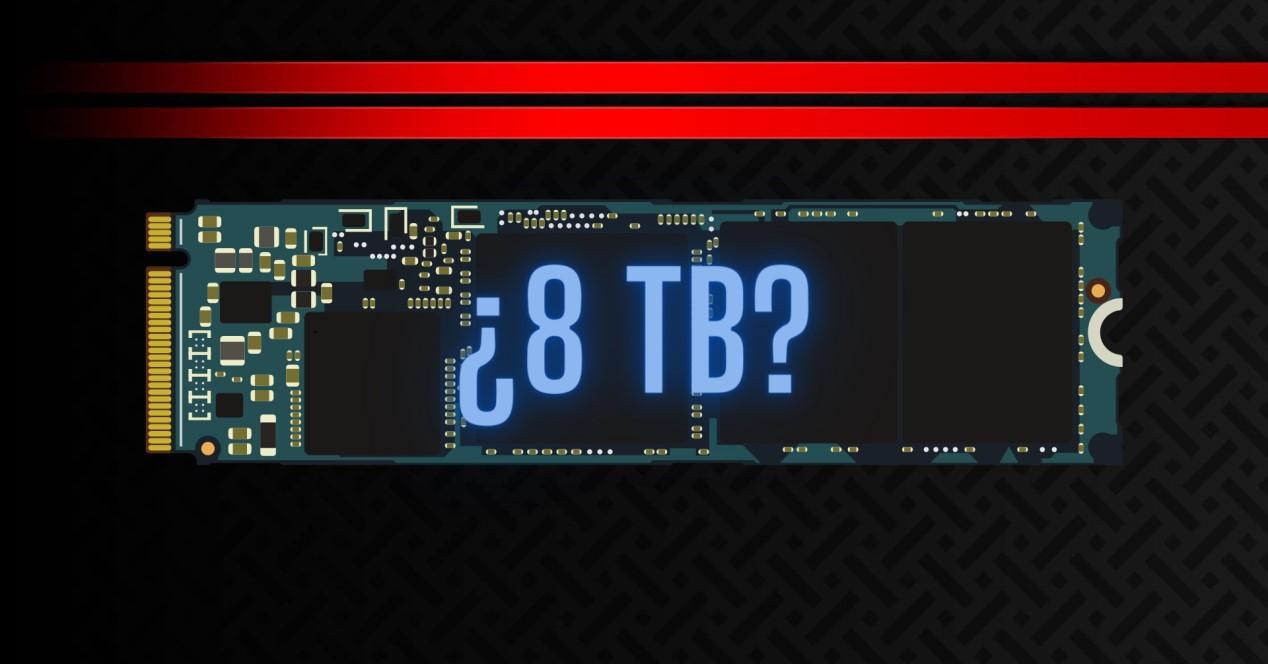Solid-state storage drives are an essential part of a new computer setup. It brings a lot, mainly in terms of performance, but also in terms of energy efficiency. But, Why don’t we see M.2 format SSDs larger than 4TB?
The SATA interface has been abandoned in favor of the new connectors based on the PCIe interface. The advantage is obvious: much higher read and write speeds. But, the current design of the M.2 connector has serious shortcomings and imposes significant limitations on the capacities of these storage units.
The 4 TB capacity wall
First of all, we would like to point out that on the market EXIST units 8TB M.2 SSD ability. Corsair has a few units, PNY has one unit, and Sabrent also has a unit with these capabilities. But, that’s a far cry from the huge range of 8TB hard drives on offer.
There is a lot of technical reasons that prevent easy passage 4TB barrier. The first is the number of bits per cell and the number of layers of NAND Flash chips. Another reason is that it is not possible to install memory chips at the bottom of M.2 SSDs, because the heat cannot be dissipated well.
One of the limits is established by the standardization of the 2280 format, which defines a length of 80mm. There is the standard 22110, which limits the length of M.2 SSDs to 110 mm. Technically I could house a second NAND Flash memory chip in the unit. Here is an additional factor and that is heat generation.
There are several ways to “break” this technical limitation using this same connector. The option would be to change the position of the connector forming a 90º angle with respect to the base plate.
Undoubtedly, the easiest solution of all to increase capacity is imitate the DIMM connector of RAM memories. Developing a mounting system similar to that of RAM memory could result in a brutal game. We could have Enlarge the M.2 SSD and break through the 4TB barrier.
We need more capacity and better prices, not more heat
About a year ago, M.2 PCIe SSDs were announced, which would arrive between September and December 2022. We are already in 2023 and it is still (or practically) impossible to find units based on this interface. Manufacturers have found that the heat generated is brutal and active heatsinks are required.
In fact, we don’t need 12GB/s of data transfer at all for daily use. PCIe 4.0 transfer speeds are already excellent, it would be interesting to work on alternatives to increase capacity. It’s not so much about competing with hard drives, which I consider an absurd war, but about improving the offer for users.
Four 8TB units can be found, but they are worth more than 1,000 dollars, absurd and off-market prices. The problem is that there is no supply, but if the supply were to increase, the prices would drop and at the same time, this would lead to a drop in the rest of the capacities. In this scenario, the door opens to 1TB units for 50 dollars and 2TB for around 100 dollars. Of course, all of this is based on the principle of modifying the current M.2 interface, which generates notable and easily correctable limitations.










